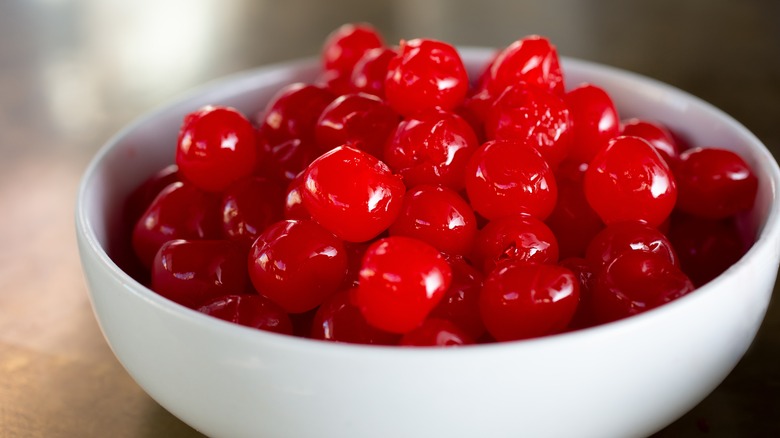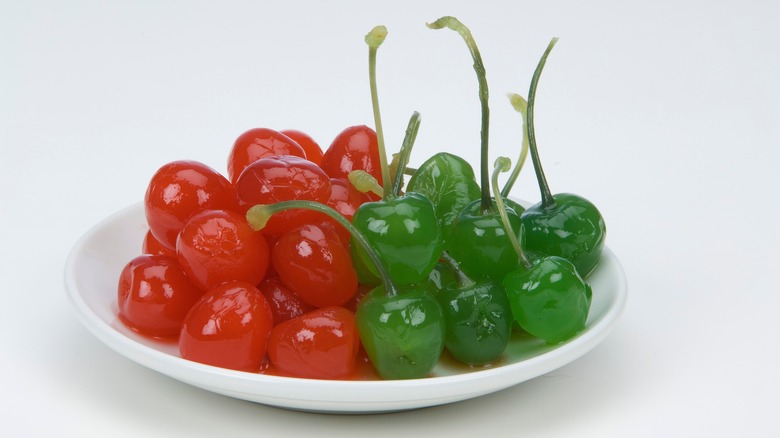How Do Maraschino Cherries Get Their Vibrant Color?
When someone says, "Pretty please, with a cherry on top," we all know what kind of cherry they're talking about. It's not one of those natural, healthy varieties like the bing cherry or black cherry. Oh no, they're talking about the Maraschino cherry: the one fruit that just about every child enjoys. Maraschinos are the classic choice to top your sundae, and they are absolutely essential to the Shirley Temple (and its boozy sibling, the Dirty Shirley).
The history of Maraschino cherries goes further back in time than you'd probably think, perhaps all the way to the 16th century when people in modern-day Croatia began distilling a cherry-based liqueur that came to be known as Maraschino. They also soaked additional cherries in this liqueur, creating the predecessors of modern Maraschino cherries.
However, the Cooking Channel notes that the original Maraschinos were made from dark and sour marasca cherries, a far cry from the variety we know today. If you've ever thought the neon red color of Maraschino cherries looked unnatural, you're exactly right. Here's how the color is created.
Dye hard
The original marasca Maraschinos took off in popularity in the 1800s, when they became a favored cocktail topping throughout Europe. According to the Cooking Channel, it wasn't long before they caught on in the U.S., but when Prohibition outlawed alcohol sales, the booze-soaked cherries disappeared.
Epicurious credits horticulturist Ernest Wiegand of Oregon Agricultural College for inventing an alcohol-free version by soaking sweet Royal Anne cherries in brine with calcium salts. This preserved them in a similar fashion to the European variety, but there was a problem. The brine bleached the cherries, removing their natural color. The only way to get it back was to soak the cherries again, this time with red food dye.
Wiegand's method has changed a bit in the modern era, according to Healthline. Now, manufacturers brine cherries with calcium chloride and sulfur dioxide, removing both their color and natural flavor.
This process takes four to six weeks, after which the cherries go into a second brine containing red dye, a bit of oil, and a lot of sugar. Per Practical Cooks, this process also softens the cherries so their pits slide right out. You can sometimes spot a small tear in the skin where the pit was expelled.
Perhaps the most interesting fact here is that, since Maraschino cherries are colored by dye, they can technically come in any hue. The Houston Press cites green Maraschinos as a particularly notable example, perfect for a Saint Patrick's Day cocktail — and not much else.

